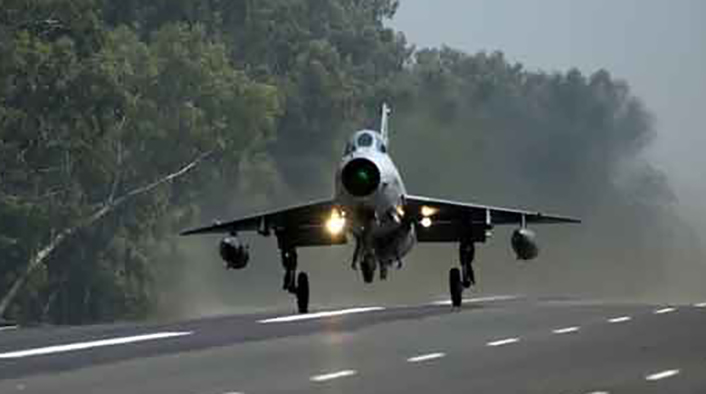Pakistani F-7PG and Mirage III-DP Practice Flight Ops from Forward Area.
It seems like there have been a lot of videos shared lately of air forces around the world conducting training exercises from roadways. Air arms do this to maintain proficiency with recovering to and deploying from improvised, forward area refueling points, or “FARPs” and also to disperse aircraft away from airfields that may become a conspicuous target for airstrikes if hostilities break out.
This week in Pakistan we got to see some interesting aircraft types practice the technique, and it provided another insight into the challenges posed by operating sophisticated tactical aircraft from an unsophisticated area.
The exercise took place along the Islamabad-Lahore motorway in Punjab, also called the M-2. This is the fourth time Pakistan has practiced recovering and deploying aircraft from the M-2 highway. The M-2 is one of the most modern roadways in Asia, analogous to German autobahn and U.S. freeway systems, both if which have also been used as expedient airfields in training.
You may remember our story from earlier this year on Aug. 27, when a Ukrainian Sukhoi Su-27 struck a road sign while landing on the M06 international highway between Kyiv and the city of Chop in Ukraine. The incident, which turned out to be minor, showcased the challenges of flight operations from an austere environment.
In this latest video from Pakistan, everything appears to go according to design. But the high landing speeds of the delta-winged Mirage and F-7P, show how easy it would be for one of these exercises to go wrong in a hurry.
Pakistan’s F-7P, a People’s Republic of China license-built version of the MiG-21, is an old aircraft for a front-line fighter by any measure. She is now 58 years old in design and is soon to be completely replaced by the JF-17 Thunder. But tactics like deploying from unimproved roadways keeps this older design tactically relevant.
The French-designed and built Mirage IIIs are also nearly vintage aircraft, originally flying in 1961, and acquired by the Pakistanis over the decade between 1967 and 1977. This aircraft has proven highly capable in service with numerous countries, but most notably in Israeli service. In the 1973 Yom-Kippur War, Israeli Mirage IIIs claimed an astonishing 106 Syrian and Egyptian aircraft shot down according to the Israelis.

And everyone who studies the air war in Vietnam recalls that the North Vietnamese had considerable success with “older” aircraft designs like the MiG-17, MiG-21 and MiG-19 against America’s supposedly more modern F-105 Thunderchief and even the F-4 Phantom II. So, it isn’t necessarily how new a combat aircraft design may be, but also how it is employed in combat that ultimately determines its level of effectiveness.
Pakistani Air Vice Marshal Zaffar Aslam said in a statement that, “PAF regularly undertakes road runway operations as part of its operational preparedness plan.” Air Vice Marshall Aslam also acknowledged the close coordination and support of various civil and military departments, especially the National Highway Authority, FWO and Motorway Police, “Whose assistance,” Aslam said, “played an instrumental role in the conduct of this exercise”.









